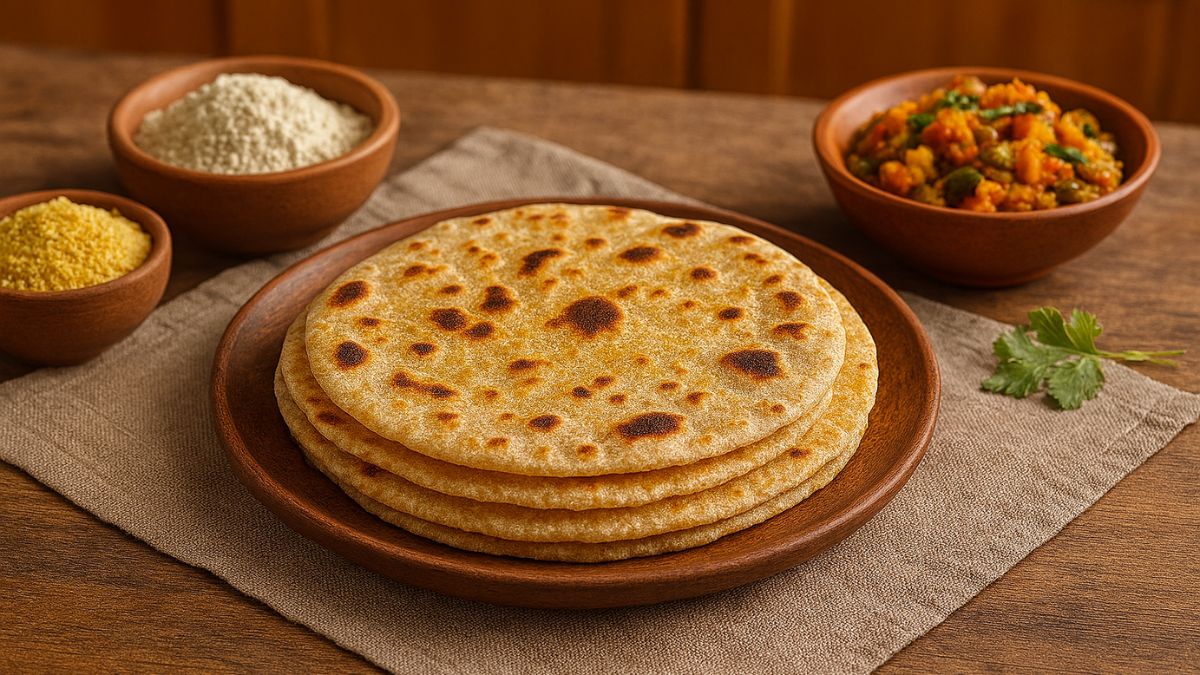I've always thought that all Rosh Hashana honey cakes were born out of the same kosher recipe.
Things changed for the good when my mother stepped in as holiday baker, replacing traditional honey cake with a tasty plum torte sprinkled with cinnamon. Then the whisk was passed to me, and every year I tried something new. I remade the plum torte, just for fun. I prepared apple honey pies, pear tarts, Concord grape crostatas and quince crumbles.But I had yet to take on a honey cake. After all, the way my grandmother made it was just the way it was supposed to taste. Or was it?I pulled out her recipe to take a look. Ideas for simple changes swarmed my brain. What if I used olive oil instead of vegetable oil for an herbal, richer flavor? Could I substitute another liquid (a fruity and full-bodied red wine, perhaps) for the coffee? How about adding spices to make it more complex?Perhaps most importantly, what if I rejiggered the proportions, increasing the oil very slightly to add moisture, and decreasing the other liquid?
Red wine honey cake with plumsTime: 1 1/2 hours, plus cooling
Yield: 10 to 12 servingsGrease or nonstick spray, for the pan300 grams all-purpose flour (2 1/2 cups), plus more for the pan10 grams baking powder (2 teaspoons)3 grams baking soda (1/2 teaspoon)3 grams salt (1/2 teaspoon)2 grams cinnamon (1 1/2 teaspoons)2 grams cardamom (1 teaspoon)2 grams ground ginger (1 teaspoon)3 large eggs200 grams granulated sugar (1 cup)1 1/4 cups olive oil1 cup plus 2 tablespoons good quality honey, more to taste3/4 cup dry red wine2 teaspoons grated fresh ginger1 1/2 pounds ripe yellow plums1 tablespoon chopped lemon thyme leaves, or regular thyme leaves, plus branches for garnish
1. Place a rack in the middle of the oven; heat to 350 degrees. Generously grease and flour a 10-inch Bundt pan, including center tube.2. In a large bowl, whisk together flour, baking powder, baking soda, salt and spices.3. In another large bowl, whisk eggs well. Whisk in sugar, oil, 1 cup honey, the wine and the fresh ginger until well combined. Whisk in dry ingredients until smooth.4. Pour batter into pan and bake until springy to the touch and a cake tester comes out clean, 45 to 50 minutes. Transfer pan to a wire rack to cool for about 20 minutes, then unmold the cake and let cool completely.5. Meanwhile, pit and quarter plums. In a medium bowl, toss plums with remaining 2 tablespoons honey and the thyme. Add more honey to taste and let macerate for at least 30 minutes. Serve cake sliced and garnished with plums and thyme branches.Note: Measurements for dry ingredients are given by weight for greater accuracy. The equivalent measurements by volume are approximate.© 2013 New York Times News Service
Things changed for the good when my mother stepped in as holiday baker, replacing traditional honey cake with a tasty plum torte sprinkled with cinnamon. Then the whisk was passed to me, and every year I tried something new. I remade the plum torte, just for fun. I prepared apple honey pies, pear tarts, Concord grape crostatas and quince crumbles.But I had yet to take on a honey cake. After all, the way my grandmother made it was just the way it was supposed to taste. Or was it?I pulled out her recipe to take a look. Ideas for simple changes swarmed my brain. What if I used olive oil instead of vegetable oil for an herbal, richer flavor? Could I substitute another liquid (a fruity and full-bodied red wine, perhaps) for the coffee? How about adding spices to make it more complex?Perhaps most importantly, what if I rejiggered the proportions, increasing the oil very slightly to add moisture, and decreasing the other liquid?
Advertisement
Red wine honey cake with plums
Advertisement
Yield: 10 to 12 servingsGrease or nonstick spray, for the pan300 grams all-purpose flour (2 1/2 cups), plus more for the pan10 grams baking powder (2 teaspoons)
Advertisement
Advertisement
1. Place a rack in the middle of the oven; heat to 350 degrees. Generously grease and flour a 10-inch Bundt pan, including center tube.2. In a large bowl, whisk together flour, baking powder, baking soda, salt and spices.3. In another large bowl, whisk eggs well. Whisk in sugar, oil, 1 cup honey, the wine and the fresh ginger until well combined. Whisk in dry ingredients until smooth.4. Pour batter into pan and bake until springy to the touch and a cake tester comes out clean, 45 to 50 minutes. Transfer pan to a wire rack to cool for about 20 minutes, then unmold the cake and let cool completely.5. Meanwhile, pit and quarter plums. In a medium bowl, toss plums with remaining 2 tablespoons honey and the thyme. Add more honey to taste and let macerate for at least 30 minutes. Serve cake sliced and garnished with plums and thyme branches.Note: Measurements for dry ingredients are given by weight for greater accuracy. The equivalent measurements by volume are approximate.© 2013 New York Times News Service
For the latest food news, health tips and recipes, like us on Facebook or follow us on Twitter and YouTube.
Advertisement
